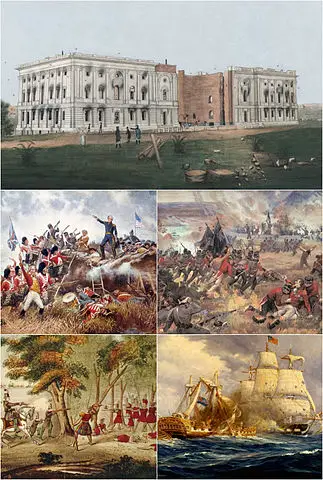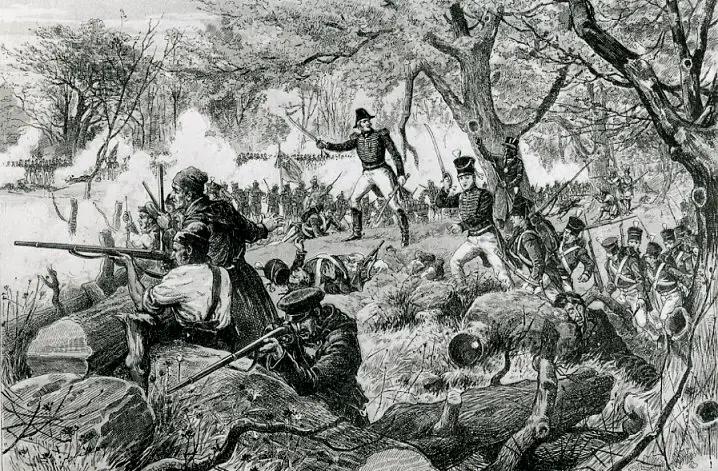War of 1812
The War of 1812 is often called the Forgotten War or the “Second War of Independence.” The war was between the British Empire and the United States and lasted from 1812 to 1814.
There were a lot of factors that led up to the war, but one of the most important was that the British Empire was also at war with France and put restrictions on the U.S. to keep them from trading with France.
The United Kingdom made things worse by capturing one of the U.S. trade vessels and forced them to join their own Royal Navy.
Another major issue was that Great Britain began fighting with the Native Indians to help protect land that the Indians had lived on for thousands of years and keep the American settlers from expanding westward.

All of these totaled to a recipe of disaster that boiled over in the War of 1812.
The political leaders of the time included President James Madison on the U.S. side, with the military leaders of Henry Dearborn, William Henry Harrison, Andrew Jackson, and Winfield Scott. On the British side was Prince Regent (George IV), as well as Robert Jenkinson, who was their Prime Minister.
To get back at Great Britain, U.S. forces attacked the British Colony of Canada on June 18, 1812. Unfortunately, the United States military wasn’t very experienced, and they not only lost that battle, but they also lost the city of Detroit.
Things took a better turn for U.S. troops in 1813 when they won at the Battle of Lake Erie. Within a few weeks, another group of U.S. troops led by William Henry Harrison won against Native Indians at the Battle of the Thames.

Compared to the United States, the British forces had a well-trained army and a vastly superior navy. They used their navy for continual attacks on east coast ports so that they could limit the traffic and the trade that was vitally needed by the U.S.
August 24, 1814, was the day that the British troops entered and took control of Washington, D.C. The forces burned down many of the buildings in the city, including what was then called the Presidential Mansion, and later called the White House.
The British troops seemed to be winning until the Battle of Baltimore. This was a fight that lasted from September 12 through the 15th in 1814. The British naval ships wanted to take over the port in Baltimore, and they continued to attack Fort McHenry that was defending the port.
Even though the British had more troops, the U.S. forces fought to the point where the British withdrew. Historians have said that this was the major turning point in the war.
New Orleans was another important port in the south. It was the major port for much of the trade, and the British knew it was critical to take that port.
The final fight was the Battle of New Orleans on January 8, 1815. The attack on New Orleans by the British was met by Andrew Jackson and the U.S. troops. Jackson and his forces defeated the British, and on December 24, 1814, Great Britain and the U.S. signed the Treaty of Ghent peace treaty.
The strange thing about the War of 1812 is that neither the U.S. nor Great Britain got anything out of it. No borders were changed, and nothing was gained by either side.
However, it is important to realize that after this war, it brought about a different relationship between the two countries that is called the “Era of good feelings.”
What did you Learn?
What are two other names that are often used for the War of 1812?
Forgotten War and Second War of Independence
What caused Great Britain to place trade restrictions on the United States?
Their war with France
Where did U.S. troops attack and lose a part of the War of 1812?
British Colony of Canada
Why did Great Britain think they could win in another war with the United States?
They had more troops and a better navy
What iconic structure did the British burn down in Washington, D.C.?
Presidential Mansion/White House
What was the name of the peace treaty that ended the War of 1812?
Treaty of Ghent



